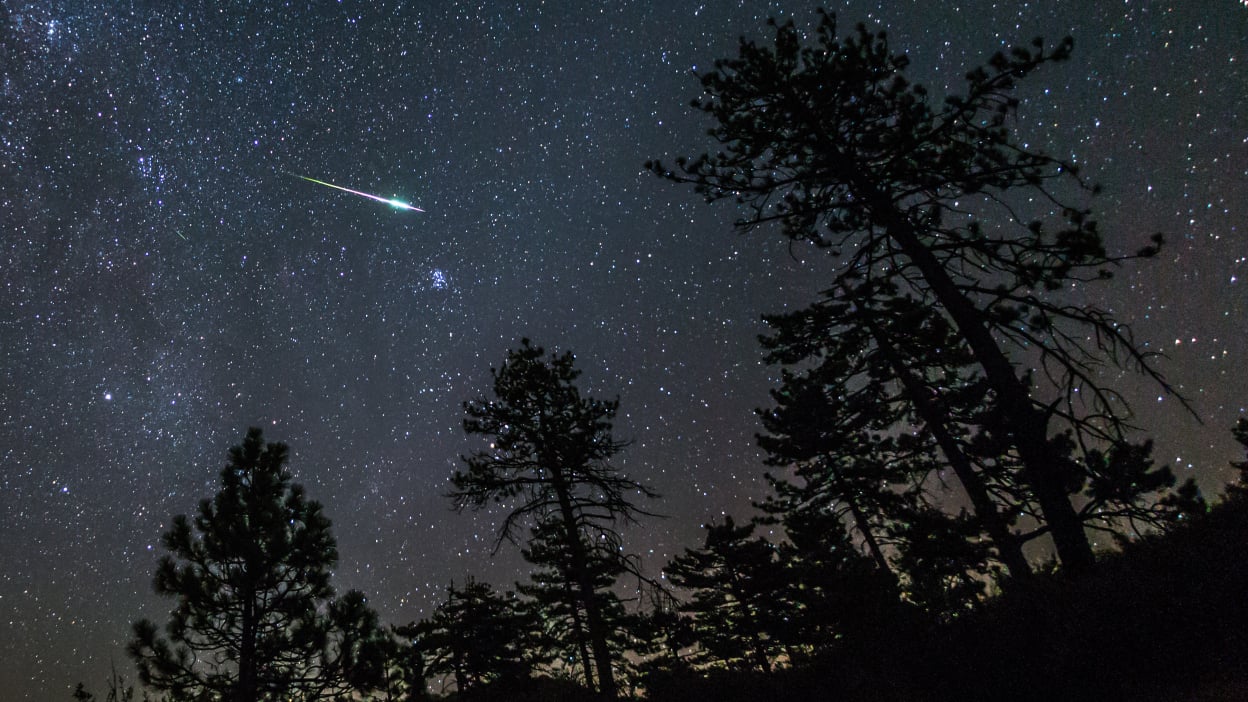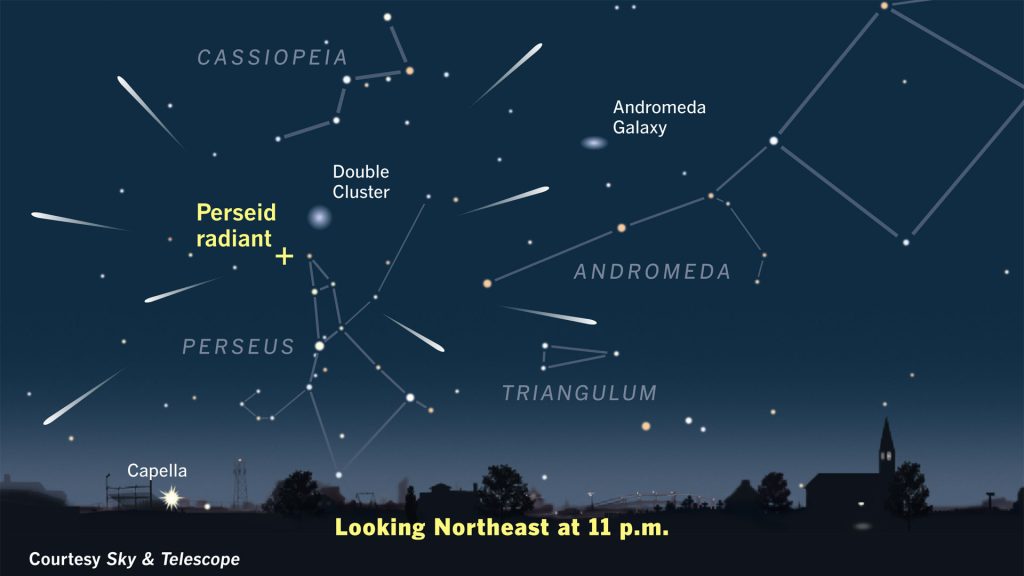The Perseids meteor shower: Get Ready for Celestial Fireworks in August!
31st Jul 2023
The Perseid meteor showers are back, and this year, the Perseids promise to be spectacular! Here’s your guide on how to catch the Perseids meteor shower in the UK.
What is the Perseids meteor shower?
It’s grain-of-rice sized remnants originating from the comet 109P/Swift-Tuttle. As the comet moves through space, it leaves behind a trail of dust, which Earth encounters harmlessly each year. When these remnants are adrift, they’re referred to as “meteoroids.” However, when they blaze through the atmosphere, creating a stunning display of light, they earn the name “meteors.”
Meteor showers receive their names from the constellation that appears to be the source of the meteors. When observed from Earth, the Perseids, for example, seem to originate from the general vicinity of the Perseus constellation in the Northern Hemisphere.
Where and when is the Perseid meteor shower in the UK?
The Perseids meteor shower peak in 2023 will be on Sunday, 13th August, with the best viewing starting the night of Saturday, 12th August. However, the show started on 14th July and runs until August 24, so you have ample opportunities to witness it.
If you can spare some time to gaze at the sky on any given night in that time frame, you might spot two to seven meteors per hour under favourable conditions. But here’s the best part: this year’s Perseids will be “relatively unaffected by moonlight,” according to Bill Cooke at NASA.
What time of day is best to see the Perseid meteor shower? The best time to witness the Perseids in all their glory will be around midnight in the UK on the night of 12th-13th August, with the potential to see over 100 meteors per hour!
If remaining awake throughout the night is not an option, you can utilize a geotargeted source to determine the time at which Perseus will ascend above the horizon in your specific location, facilitating an optimal viewing experience.
Can I see the Perseid meteor shower in the UK?
For sure! Wherever you are in the UK, keep an eye out for the August meteor shower, but the most favourable chance lies in a clear sky with minimal light pollution. The brighter meteors should still be visible from various locations, including London, yet opting for a site removed from urban illumination will enhance the chances of witnessing a greater number.
Once you’re positioned at your chosen observation point, allot sufficient time for your eyes to acclimate to the darkness. This adjustment period might extend to around 20 minutes, a patience-testing duration that optimizes your ability to perceive low light levels.
How to find the Perseids in the night sky?
If you want to see the Perseid meteor shower, you should search for the spot in the sky where the meteors seem to start. This spot is called the radiant. NASA states that the radiant point for the Perseids lies within the Perseus constellation.
Even though it might be a bit tricky to find Perseus, you can follow the easier-to-spot Cassiopeia constellation as it moves across the night sky. Remember, the meteor shower is named after the constellation it looks like it’s coming from, but the meteors don’t actually start there.

What do you need to watch the Perseids meteor shower in 2023?
Since watching the Perseid meteor shower in 2023 could occupy a considerable span, ensure you bring along something comfortable to sit on. Beforehand, consult the weather forecast and dress accordingly to accommodate prevailing conditions. While the temptation to employ binoculars for a more intimate view of the meteors might arise, it’s important to note that these will narrow your field of view, potentially complicating the sighting of the shooting stars as they streak across the heavens. Nonetheless, binoculars remain valuable tools for observing other celestial entities, such as the Moon and the planets within our Solar System.
What will the weather be like this weekend?
Of course, the famously unpredictable weather in Britain could disrupt impromptu plans to witness the meteors. Therefore, it’s wise to remain attentive to the forecast. Although the weekend is a few days ahead as of now, the Met Office‘s projections for the period from August 11th to 20th suggest a varied weather scenario.

How rare is the Perseid meteor shower?
Meteor showers become visible during varying periods throughout the year, contingent upon Earth’s traversal through the trajectories of comets or asteroids. Several meteor showers transpire annually, while certain others manifest over intervals of several years. Among the most impressive displays are meteor storms, which occur exceptionally infrequently, presenting themselves only once or twice within a lifetime.
Picture Earth as a car and our atmosphere as a windshield. The Perseids are like a swarm of bugs that splatter against the windshield, creating the dazzling meteor shower. These grain-of-rice-sized remnants come from the comet 109P/Swift-Tuttle, which last visited in 1992. So, make the most of this celestial show, as the comet won’t return until 2125!
Do Perseid meteors ever hit the ground?
Perseid meteors, like most meteors from meteor showers, typically do not reach the ground. As they travel through Earth’s atmosphere at high speeds, they heat up due to friction with the air, causing them to burn up and disintegrate before they can reach the surface. The streaks of light we see as meteors are the result of this process.
However, in rare cases, larger and more substantial meteoroids might survive the journey through the atmosphere and land on the Earth’s surface as meteorites. These events are quite uncommon and are often associated with much larger meteoroids than those that produce the typical Perseid meteor shower.
So, as you position yourself outdoors to witness the Perseids in the year 2023, bear in mind the fleeting essence of meteors within these meteor showers. The majority of these meteors infiltrate Earth’s atmosphere in obscurity. Therefore, any Perseid meteor that graces your vision during 2023 is truly there to grant you an exquisite spectacle!
What myths lie behind the Perseid meteor shower?
According to the tales of ancient Greek celestial mythology, Perseus emerges as the offspring of the deity Zeus and the mortal Danaë. The legend narrates that the Perseid meteor shower serves as a commemoration of the instance when Zeus paid a visit to Danaë, who was the mother of Perseus, enveloping her in a cascade of golden radiance.
Beyond Greek mythology, various cultures around the world have attributed different meanings to the Perseids. In some Native American traditions, the Perseids are seen as the tears of the stars, while in Chinese folklore, they are linked to the romantic tale of the Cowherd and the Weaver.
![Beauty of the Pink Moon And Lyrid Meteor Shower in This Week’s Best Astrophotos [19-26 April] Beauty of the Pink Moon And Lyrid Meteor Shower in This Week’s Best Astrophotos [19-26 April]](https://orbitaltoday.com/wp-content/uploads/2024/04/Pink-Moon-is-on-its-way-above-the-mountains-1-300x300.jpg)





Thank you for your comment! It will be visible on the site after moderation.